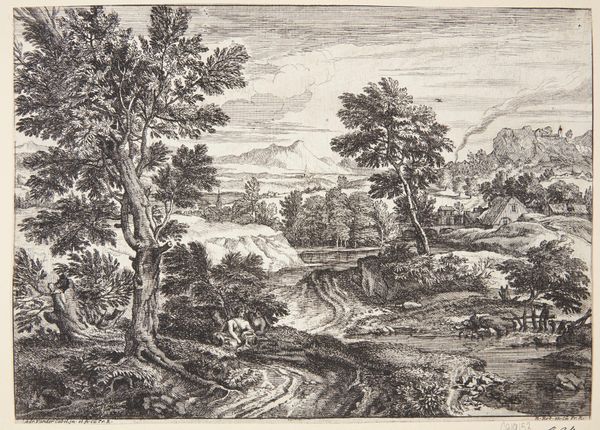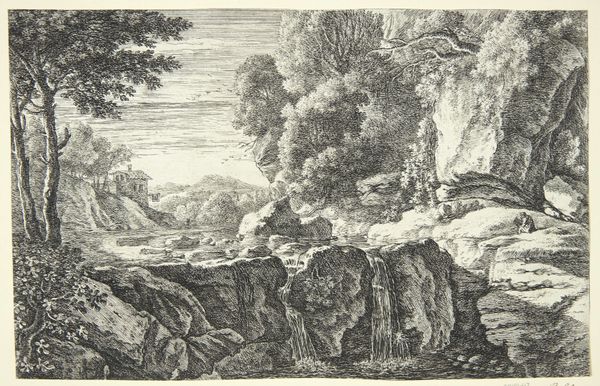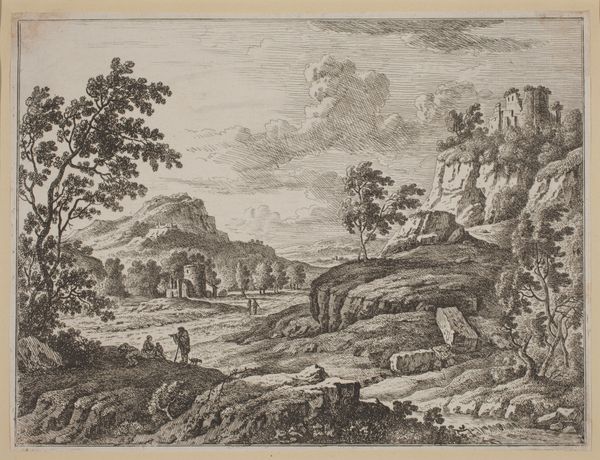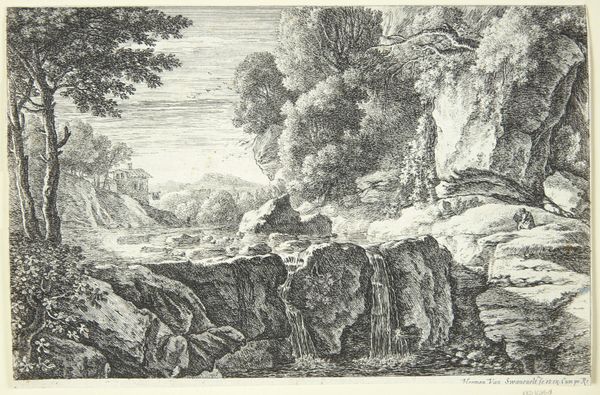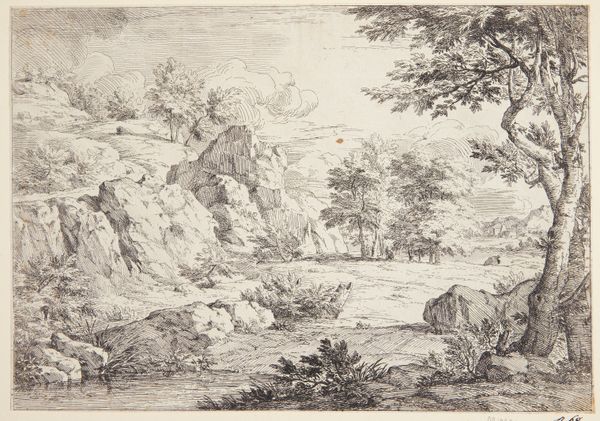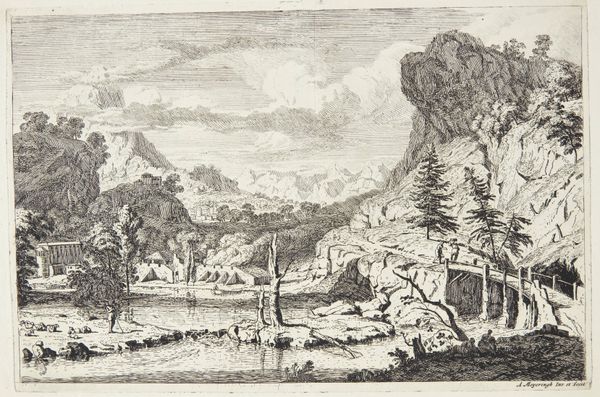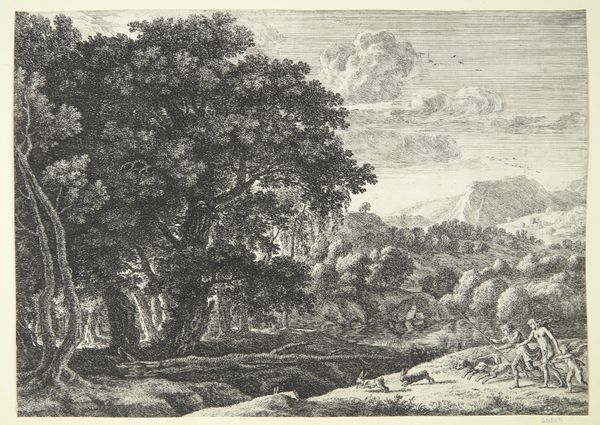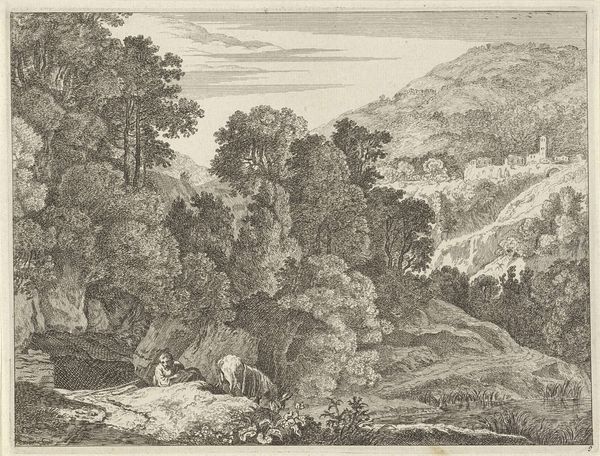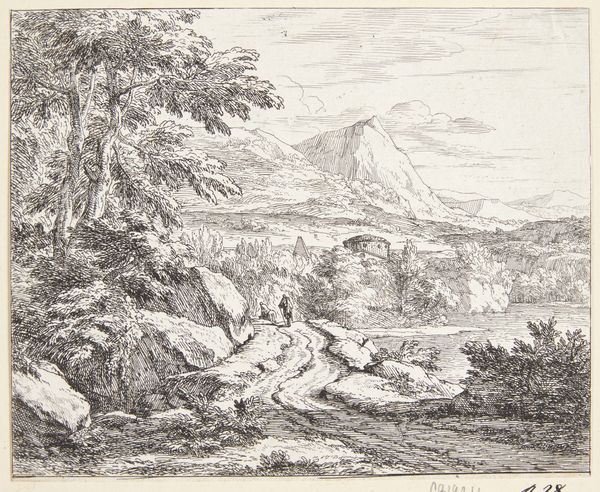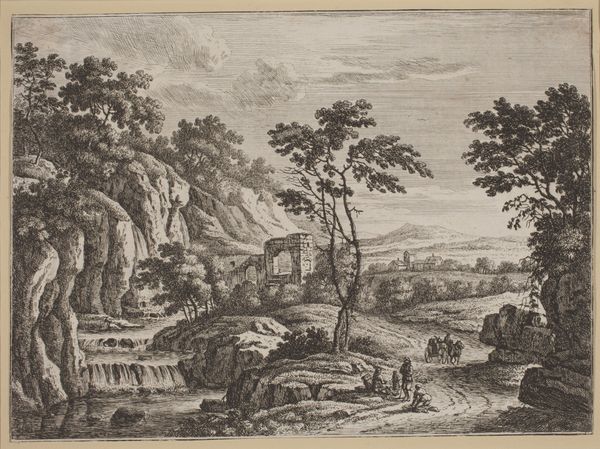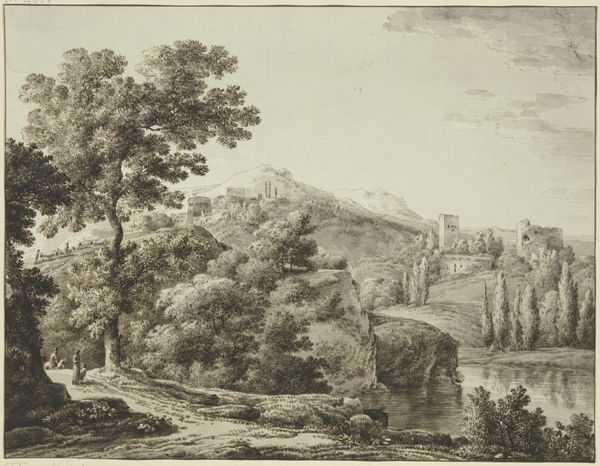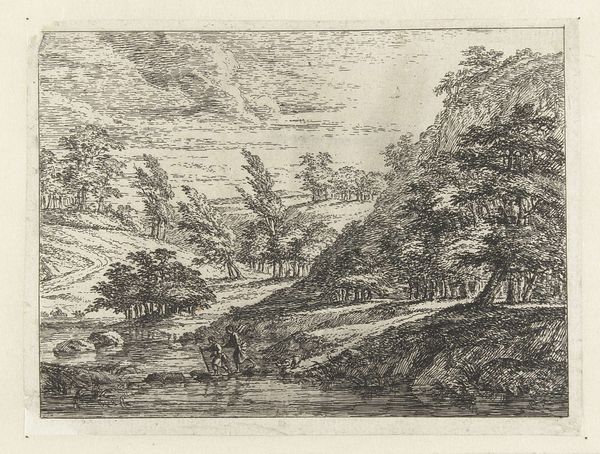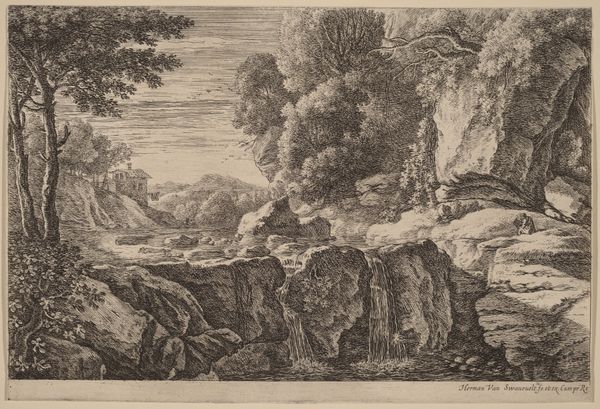
drawing, print, etching, ink
#
drawing
#
ink drawing
#
baroque
#
ink painting
# print
#
pen sketch
#
etching
#
landscape
#
ink
#
realism
Dimensions: 215 mm (height) x 322 mm (width) (plademaal)
Curator: We’re looking at "Landscape with a Hunter" by Albert Meyering. It's an etching, likely created sometime between 1645 and 1714, during the Baroque period. Editor: It's immediately striking. The detail! But it feels somber, almost melancholic, despite the idyllic landscape. The sharp contrasts created with ink give it an edgy feel. Curator: Baroque landscapes weren't just pretty pictures. They reflected a worldview, the relationship between humanity and nature, and, of course, power structures. Meyering, though less famous than some of his contemporaries, participated in those discourses. Editor: I'm seeing how the "hunter" – and I use that term loosely, he's carrying such heavy bags– is almost dwarfed by the overwhelming landscape. It really highlights humanity's relationship with nature, not always one of domination as some narratives claim, but one of precarity. It also seems class-based as there is the solitary labourer in this vista. Curator: The setting here invites that interpretation. Look how the lines of the landscape guide our eyes, leading us to the tiny figures set within a vast vista, thus conveying a certain humility. This work likely found an audience among a class aware of its place within society. Editor: It brings into focus issues of labor, ecological fragility, even the roots of environmental degradation. How much of what is seen as "natural" landscape here would reflect an environment already impacted by early capital extraction in resources. This is so different than a clean, untouched place, it highlights labour, which then encourages us to re-evaluate landscape painting. Curator: The etching technique itself is noteworthy. The lines are remarkably fine. This lends the scene depth. As well as being artistically inclined it must have been politically useful. Remember, the distribution of images played a critical role in circulating ideas throughout Europe. Editor: Looking closer at this etching invites one to ask so many further questions; ones on man and the land; power and representation. These can serve to make visible our role in social and historical processes. It also enables new meanings when it comes to today. Curator: Absolutely. And thinking about art institutions displaying this: what dialogues, or maybe silences, might these images perpetuate about access to landscape? It feels so pressing right now.
Comments
No comments
Be the first to comment and join the conversation on the ultimate creative platform.
